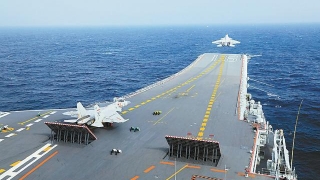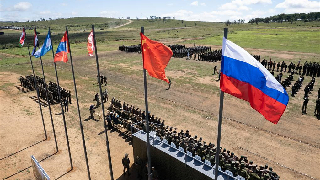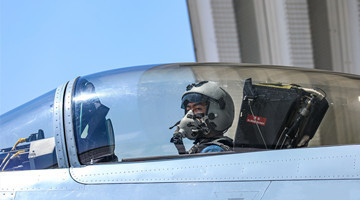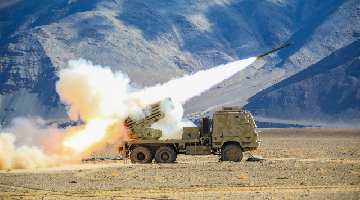
Recently, according to a report from the website of the US Defense News, Gen. Anthony Cotton, commander of the US Air Force Global Strike Command, stated that the US military enterprises are facing supply chain problems due to the impact of the COVID-19 epidemic and the recent international situation, which have shown influence on the progress of the US nuclear-weapons modernization programs. Analysts believed that the supply chain problem is just one of the multiple problems faced by the US nuclear-weapons modernization programs, and the negative consequences of the US’ “seeking hegemony with nuclear force” to others will boomerang on itself as well.
The number of nuclear weapons remains high
Since the Obama administration, the US has been promoting nuclear modernization programs. In fact, the US nuclear arsenal has been massive with no marked problem of aging. The so-called nuclear-weapons modernization programs simply serve as a cover for the US to iteratively update its nuclear arsenal to maintain its hegemony with nuclear superiority.
It is reported the US has possessed 5,428 nuclear warheads as of January 2022, ranking top in the world. The US nuclear strikes mainly include three types, that is, with land-based intercontinental ballistic missiles (ICBMs), submarine-launched ballistic missiles and strategic bombers, forming a 3-D nuclear strike system of land, sea and air. In addition, the US has a large number of small tactical nuclear weapons. Data show that the US has about 400 nuclear bombs, which can be carried and dropped by multi-model fighter jets.
Although the US has issued documents such as the Interim National Security Strategic Guidance and 2022 Nuclear Posture Review and Missile Defense Review after the Biden administration came to power, which repeatedly emphasized the need to lower the role of nuclear weapons, it has in fact been upgrading its nuclear arsenal under the table.
In terms of strategic delivery vehicles, the US intends to achieve all-round upgrading of land, sea and air to enhance its comprehensive strike capability. Specific measures include the development of the Sentinel ICBM to replace the Minuteman III ICBM, the construction of the Columbia-class ballistic missile submarine to replace the Ohio-class, and the development of the Long Range Strike Bomber (B-21) as a platform for future air-based nuclear strikes.
In terms of nuclear warheads, the US has been stepping up the development of the W87-1 nuclear warhead fit to its Sentinel ICBM, the W80-4 for its Long Range Standoff weapon cruise missile, and the W93 to replace its naval W76-1 and W88 submarine-launched nuclear warheads, etc.
Seeking hegemony with nuclear force is unpopular
The US has spared no effort to promote its nuclear-weapons modernization programs, which directly reflects its Cold War mentality and hegemonic logic. Its radical approach like this is bound to bring harm to the other countries and itself alike.
On the one hand, the US has invested heavily in nuclear modernization programs, which is in turn sure to be a heavy burden on the already troubled US economy. According to US media, the capital investment required of the nuclear forces budget over the next 30 years will reach US$1.5 to US$2 trillion.
Given the serious inflation in the US and the sharp downward revision of the economic growth forecast in 2023, such huge capital investment will definitely affect the development of the US economy. Otherwise, these funds could have been used to alleviate domestic social conflicts and improve the quality of life of the people.
On the other hand, the US upgrading of nuclear weapons will also affect the world's strategic situation and destroy the strategic balance. In particular, the US has attached great importance to low-yield nuclear weapons in the process of advancing its nuclear-weapons modernization programs. The nuclear explosive package (NEP) of the US-developed B61-12 can be adjusted in the range of 300 tons to 50,000 tons as required and can be carried and dropped by tactical aircraft such as F-15E fighter-bombers and F-35 stealth fighters. Analysts believed that the measure taken by the US will lower the threshold for the application of nuclear weapons and be prone to leading to nuclear misjudgments, thereby placing global security at major risks related to nuclear weapons.











